From the Badlands we traveled to the Black Hills, where several fantastic parks and monuments awaited us. We stayed at the Beaver Lake Campground in Custer which has nice sites, a heated pool, water slide, friendly and helpful staff, but lousy WiFi and cell service. The fiber optic cables needed for improved WiFi are about 3/4 of a mile short of the campground. So again we had no real way to reliably contact others or be contacted.
Jordan was still with us and he loves caves, so first up was Jewel Cave National Monument. Jewel Cave now has 196 recorded miles of tunnels and more is being discovered on a regular basis. Folks volunteer to spend up to 4 days straight in the cave exploring as much as possible and then packing EVERYTHING back out (think about it for a minute). Jewel Cave has many beautiful features. Our favorite is the Cave Bacon, a special example of drapery formation that contains the right minerals in the right places to make the explorers really hungry! Jewel Cave is spacious with several larger rooms where a group of 40 can gather to hear the guide’s presentation.
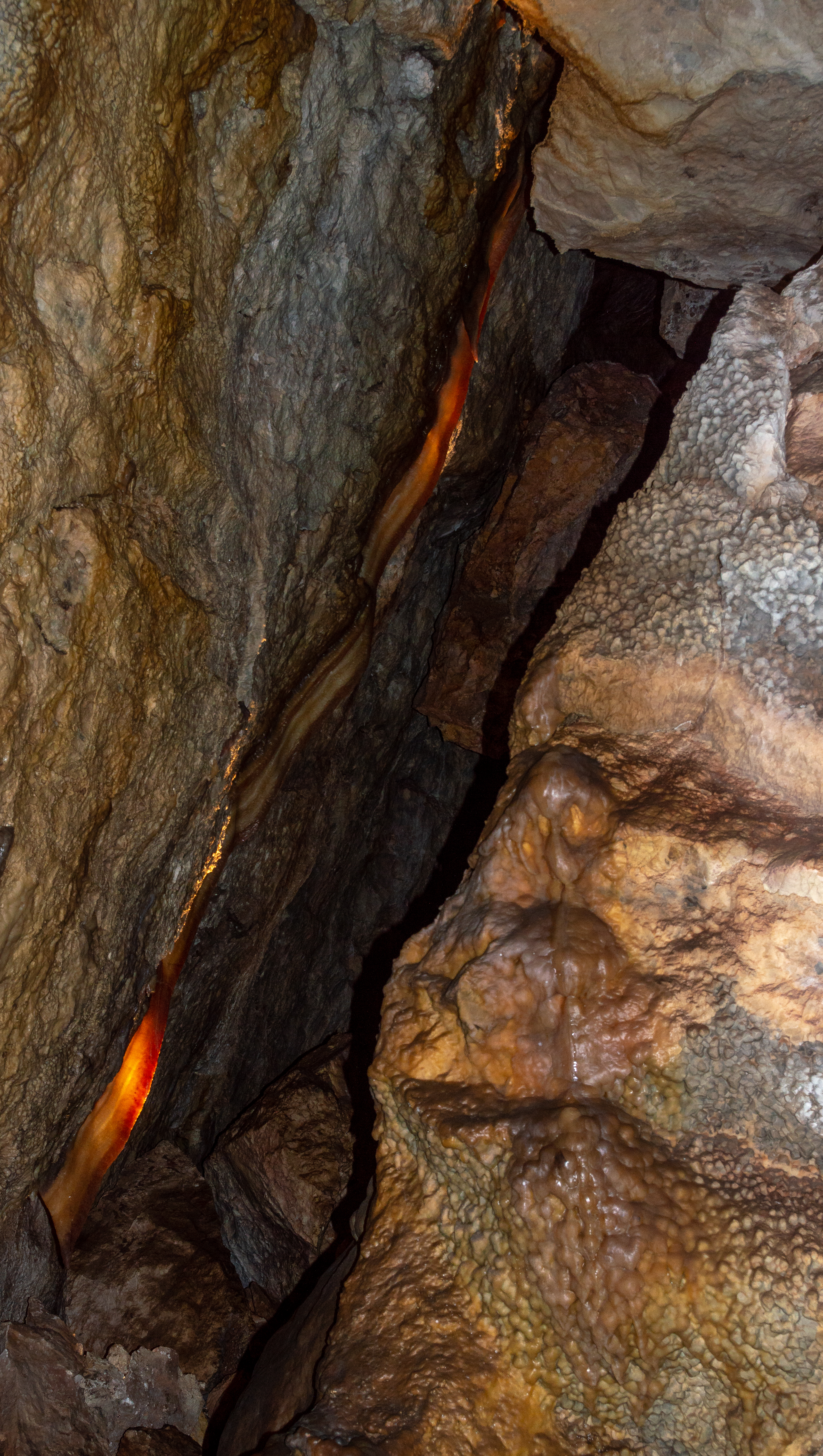 In addition to the Cave Bacon, Jewel Cave has soda straws, which are formed when the humidity in the cave falls below 100% and as water evaporates it leaves a hollow tube behind (unlike the stalactite, which is tapered and not hollow). When the deposit eventually reaches another rock you have the soda straw!
In addition to the Cave Bacon, Jewel Cave has soda straws, which are formed when the humidity in the cave falls below 100% and as water evaporates it leaves a hollow tube behind (unlike the stalactite, which is tapered and not hollow). When the deposit eventually reaches another rock you have the soda straw!
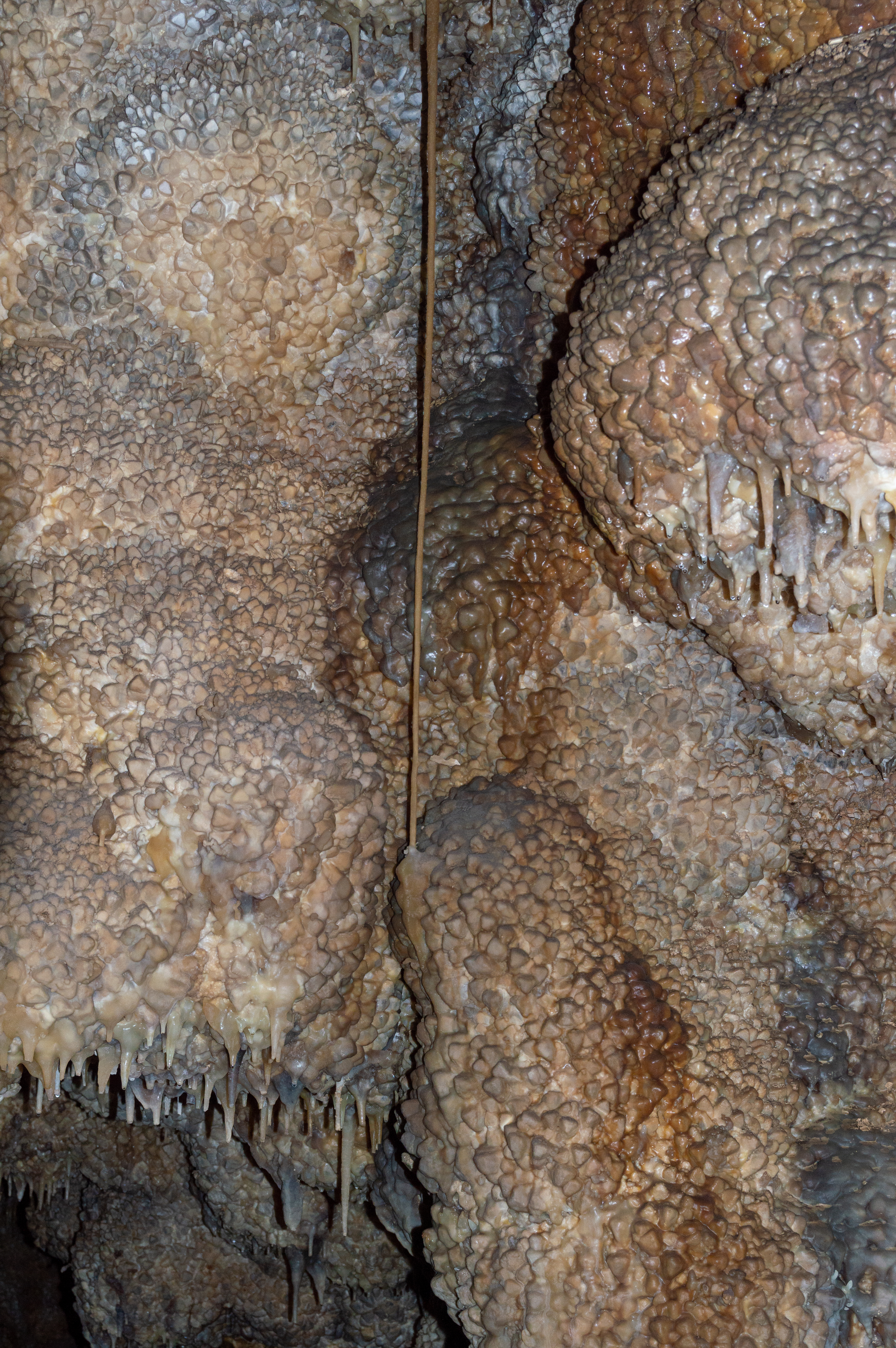
Following Jewel Cave Mount Rushmore was on the agenda! Mount Rushmore is kind of a sacred space for me. I think of all these four men contributed to our nation and what they can teach us for the future each time I am there. Jordan was very interested in how Teddy Roosevelt made the cut. We learned he was chosen for being instrumental in the development of the USA. From the Panama Canal, to trust-busting large corporate monopolies, to supporting the rights of the common man, Teddy Roosevelt led the charge! After becoming president in 1901, he also used his executive authority to protect wildlife and public lands by creating the United States Forest Service (USFS) and establishing 150 national forests, 51 federal bird reserves, 4 national game preserves, 5 national parks, and 18 national monuments by enabling the 1906 American Antiquities Act. During his presidency, Theodore Roosevelt protected approximately 230 million acres of public land.
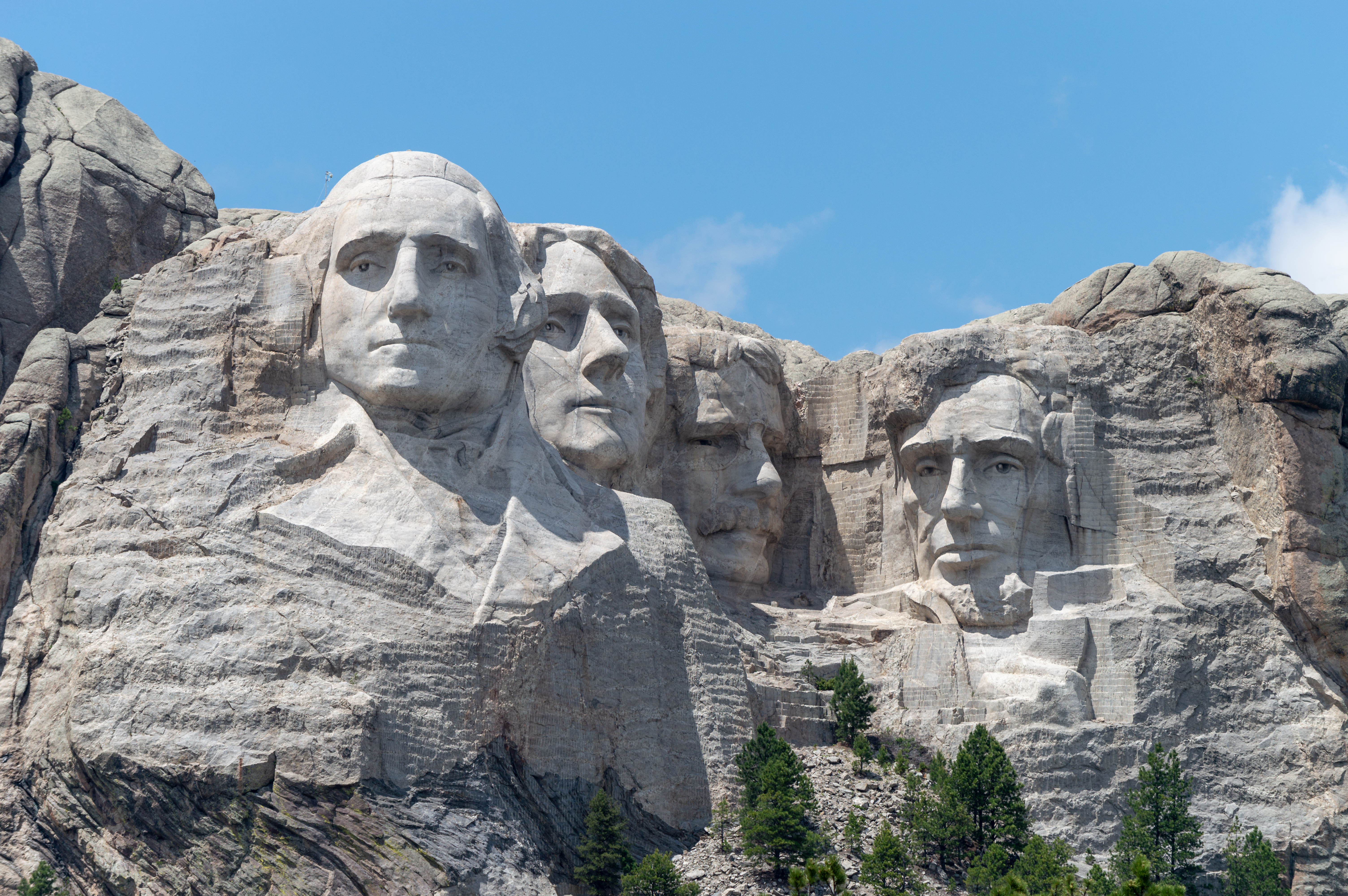
Following Mount Rushmore we drove the Iron Mountain and Needles Highways. We love the views of the granite mountains and spires. The highways themselves are a large part of the fun. From pigtails to tunnels 8 feet 4 inches wide the drive is exciting and scenic. It goes past the Eye of the Needle (below) and Sylvan Lake. This drive was one of our highlights.
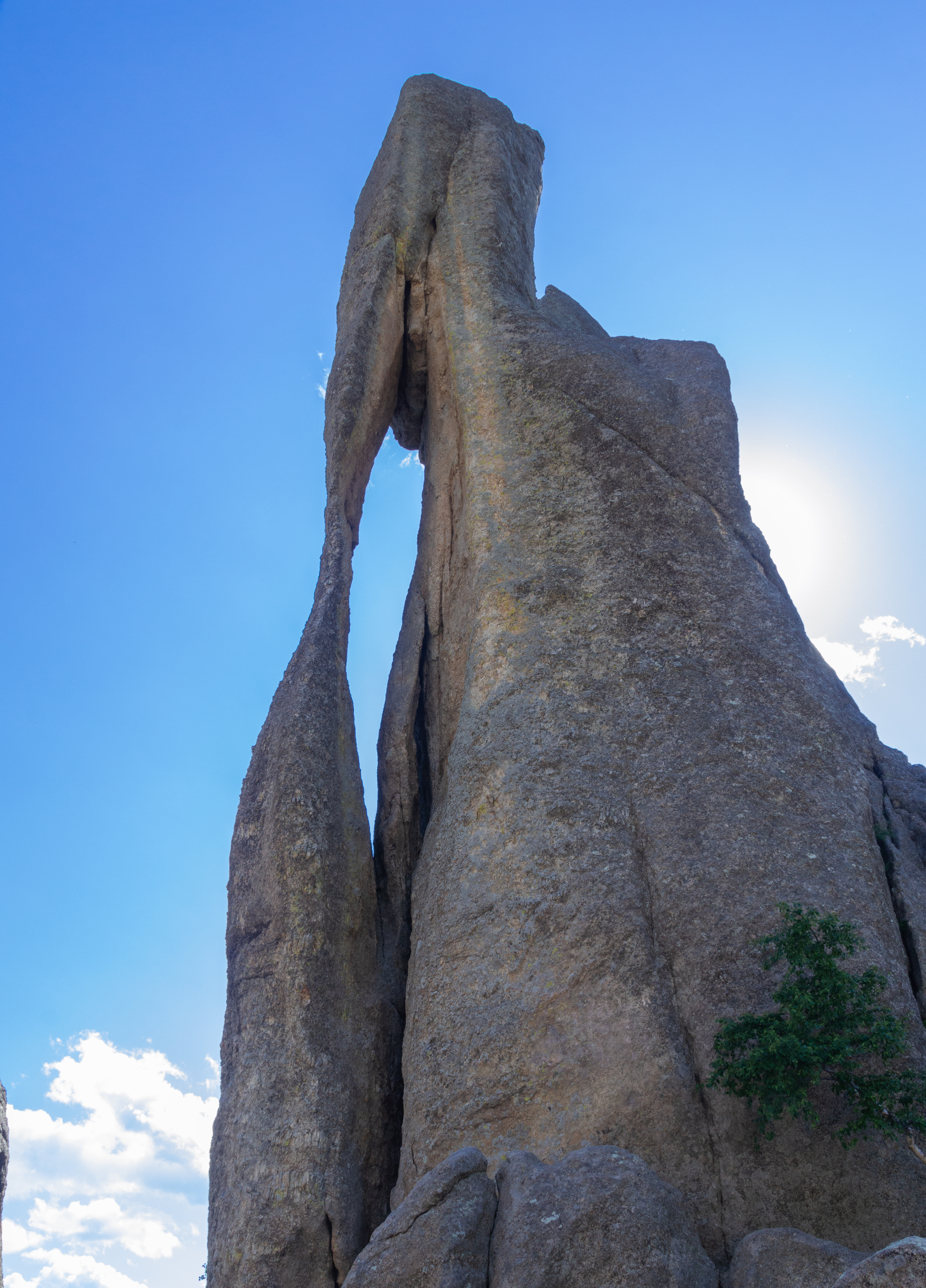
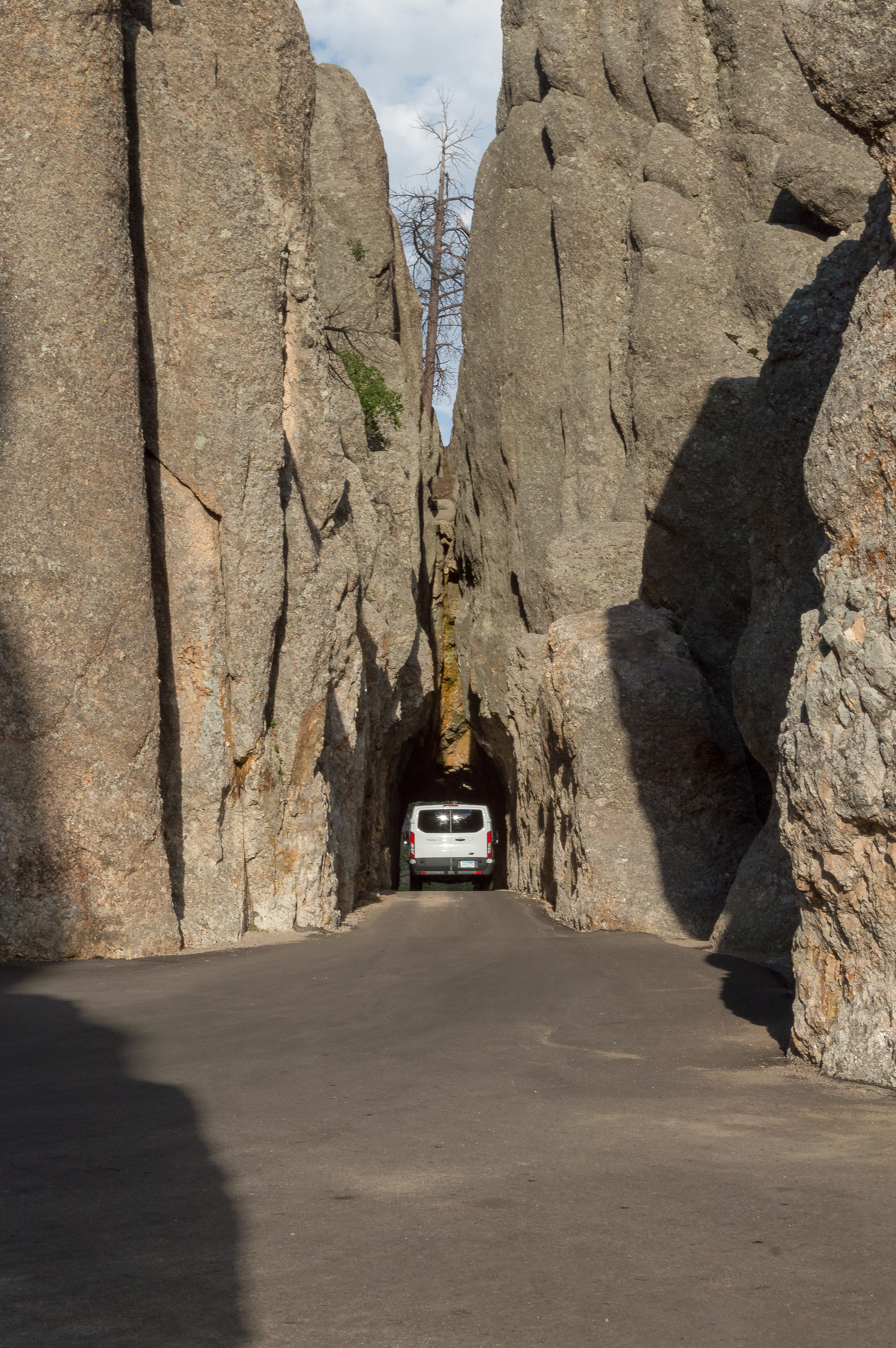
Wind Cave National Park was our next stop. The cave has about 140 miles of tunnels and contains 95% of the world’s known boxwork. Boxwork is made of calcite and was formed by mineral-laden water flowing into cracks in rocks then evaporating. When the rocks eventually wore away, what was left was basically a framework of cracks. Wind Cave is not as roomy as Jewel Cave and the formations are not as diverse, but it is still very worth the effort. The park also has several hiking trails and wildlife is a common sight.

Custer State Park is an amazing state park. First we drove the wildlife loop and saw a large herd of bison. There were several hundred in the herd we encountered and they were on both sides of the road, seemingly unfazed by the cars and observers.
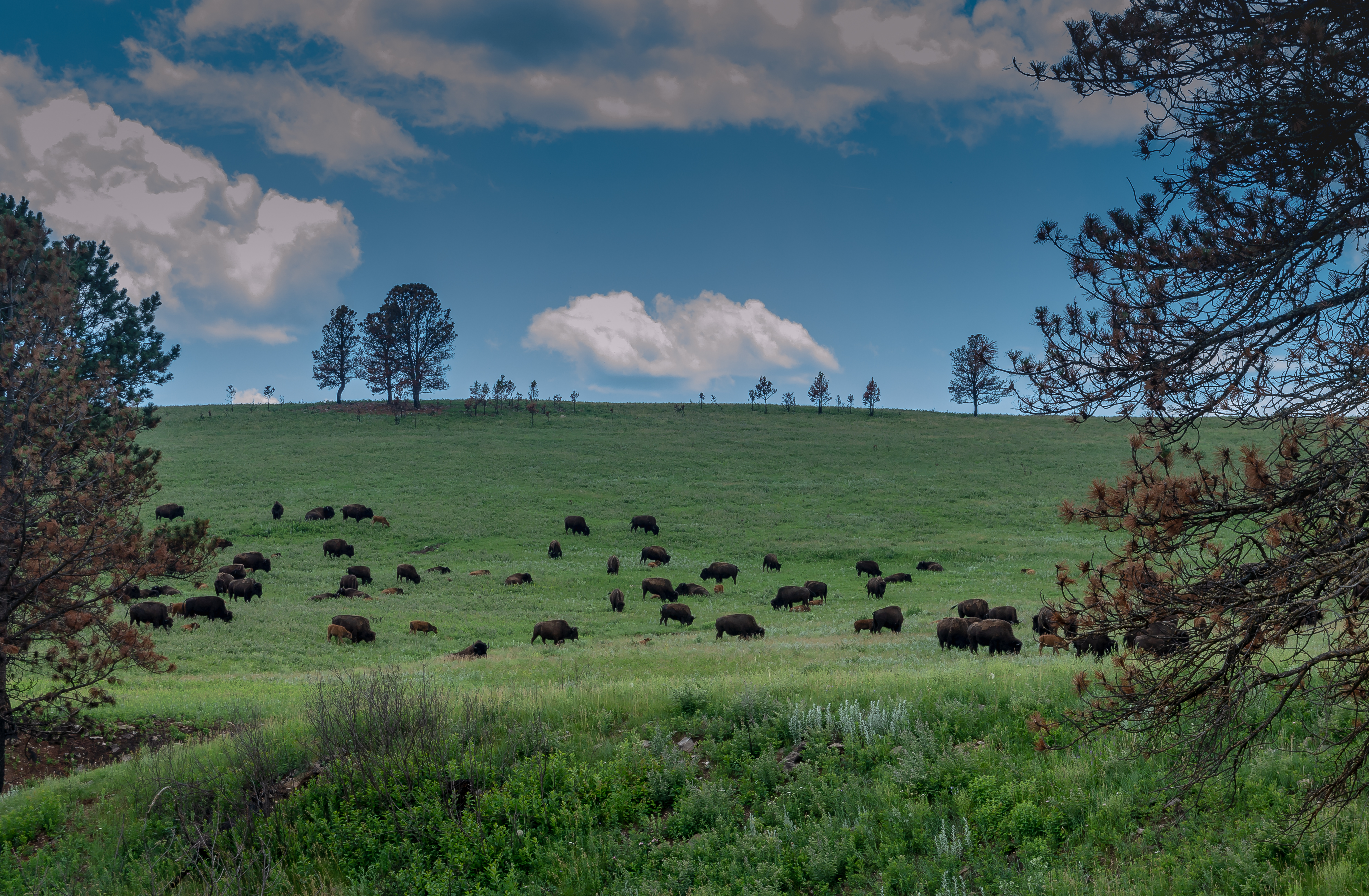
We also took a kayak ride on and a hike around Sylvan Lake. It is a small lake, but amazingly beautiful. The large granite rocks defining a portion of the shore are the highlight.
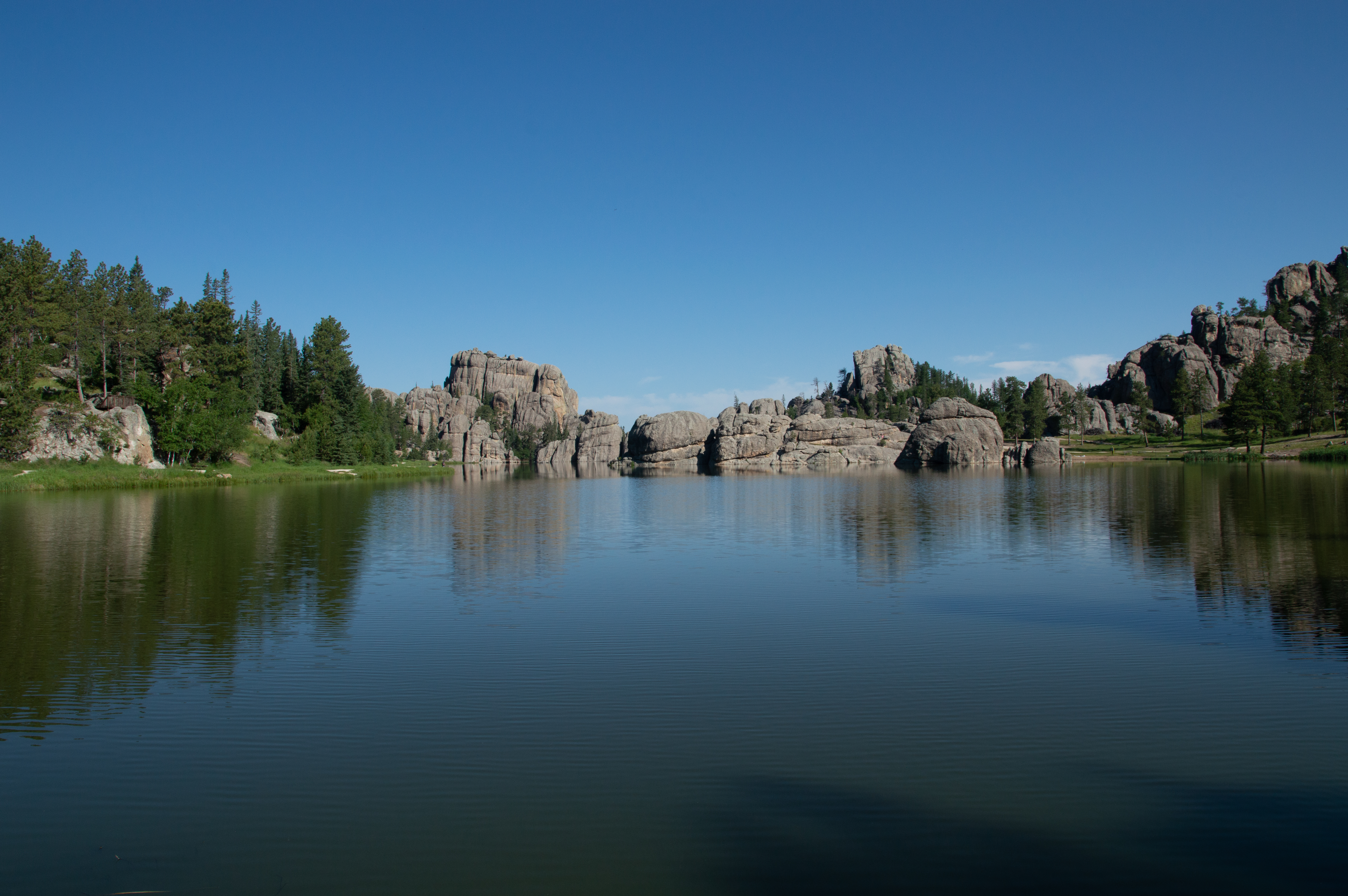
We also hiked Sunday Gulch Trail. It is a strenuous 3 mile hike with a significant elevation gain going up both at the beginning of the trail and the end. It also requires the hiker to scramble over boulders with water cascading down them. Tons of fun! The first picture is a small waterfall along the hike. The second one is part of the water-covered trail.
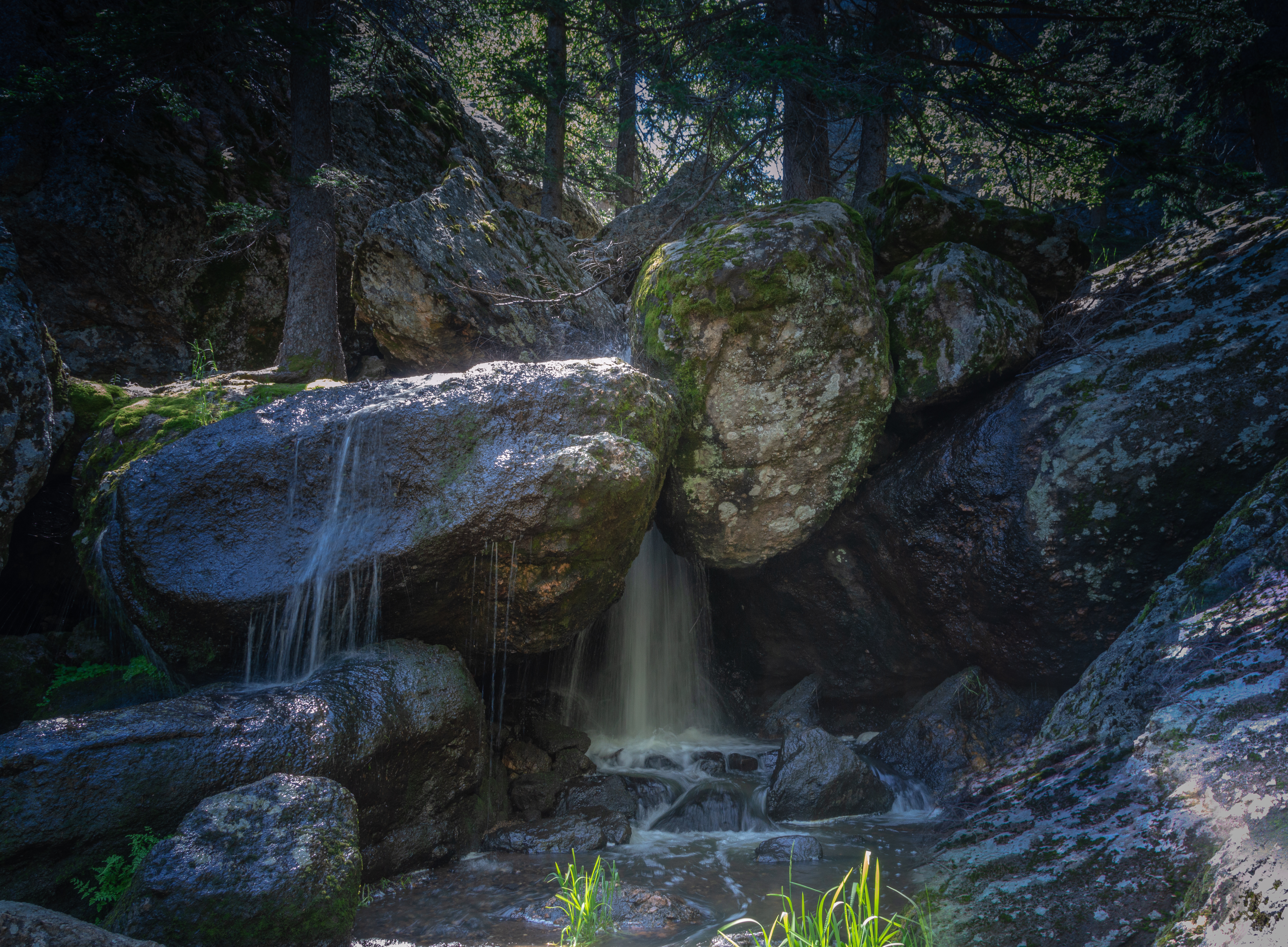
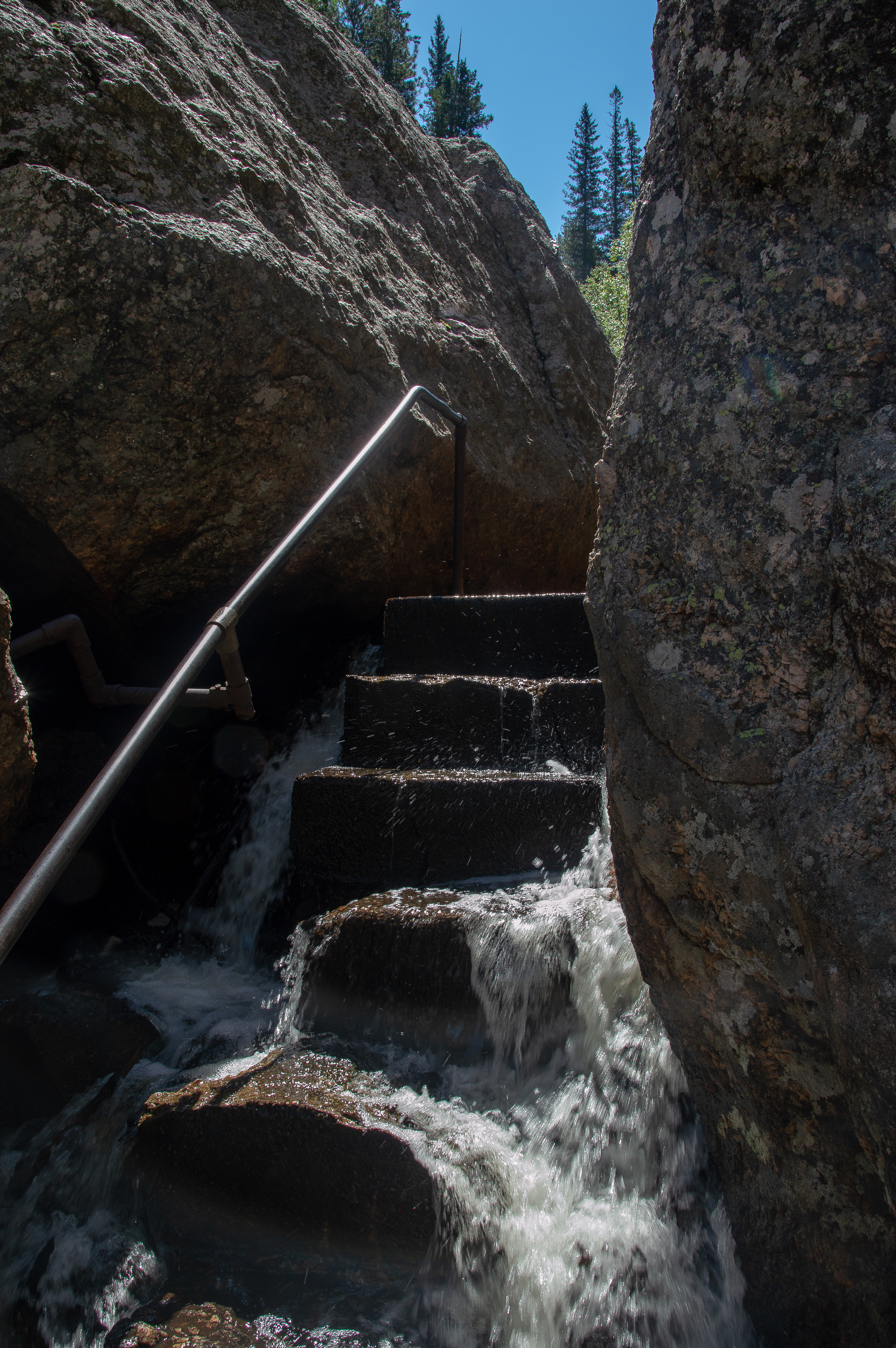
On our last day we hiked Cathedral Spires Trail, a 2.2 mile strenuous hike that includes scrambling over boulders. The views are amazing and no picture can truly capture them.
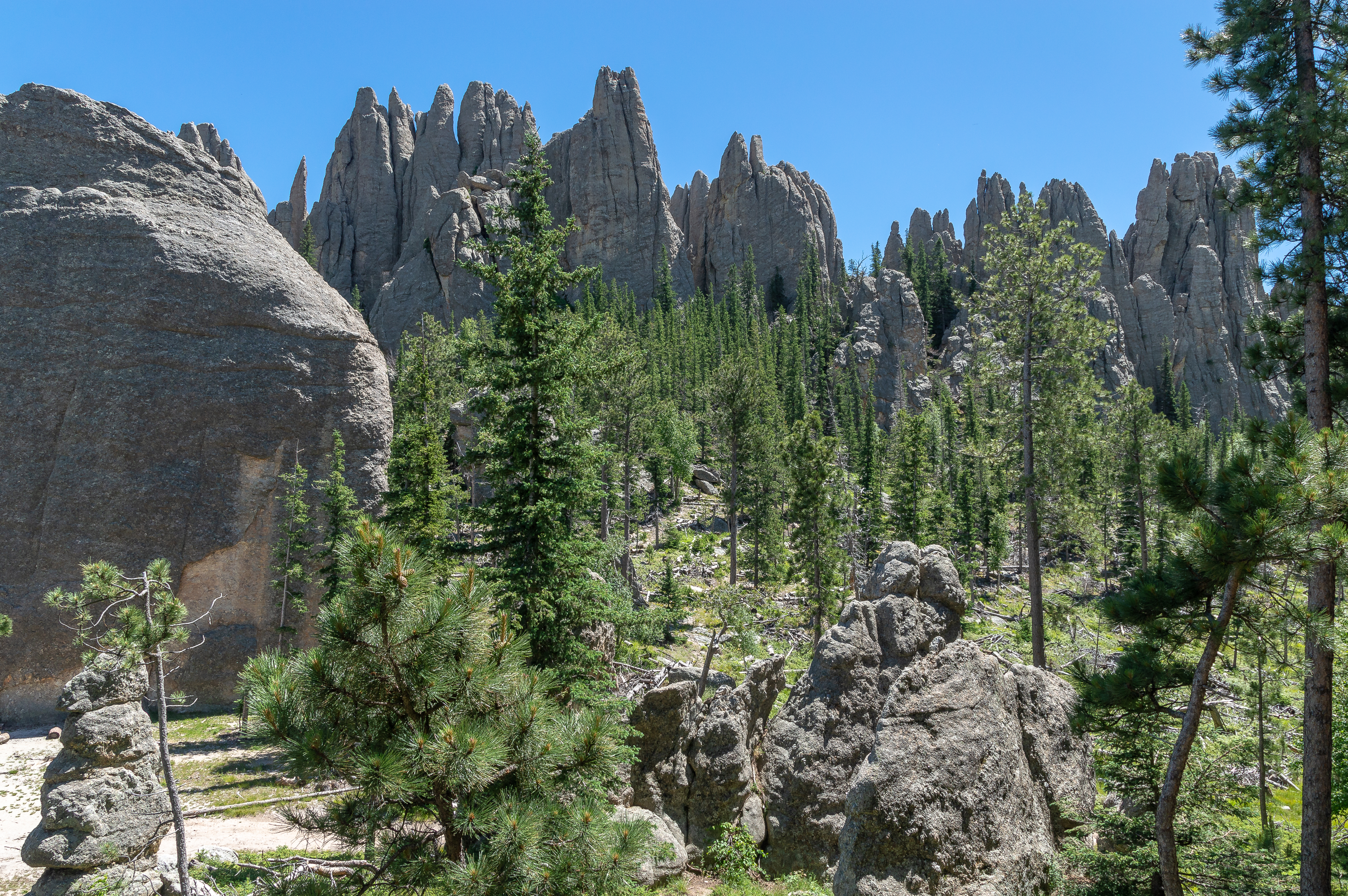
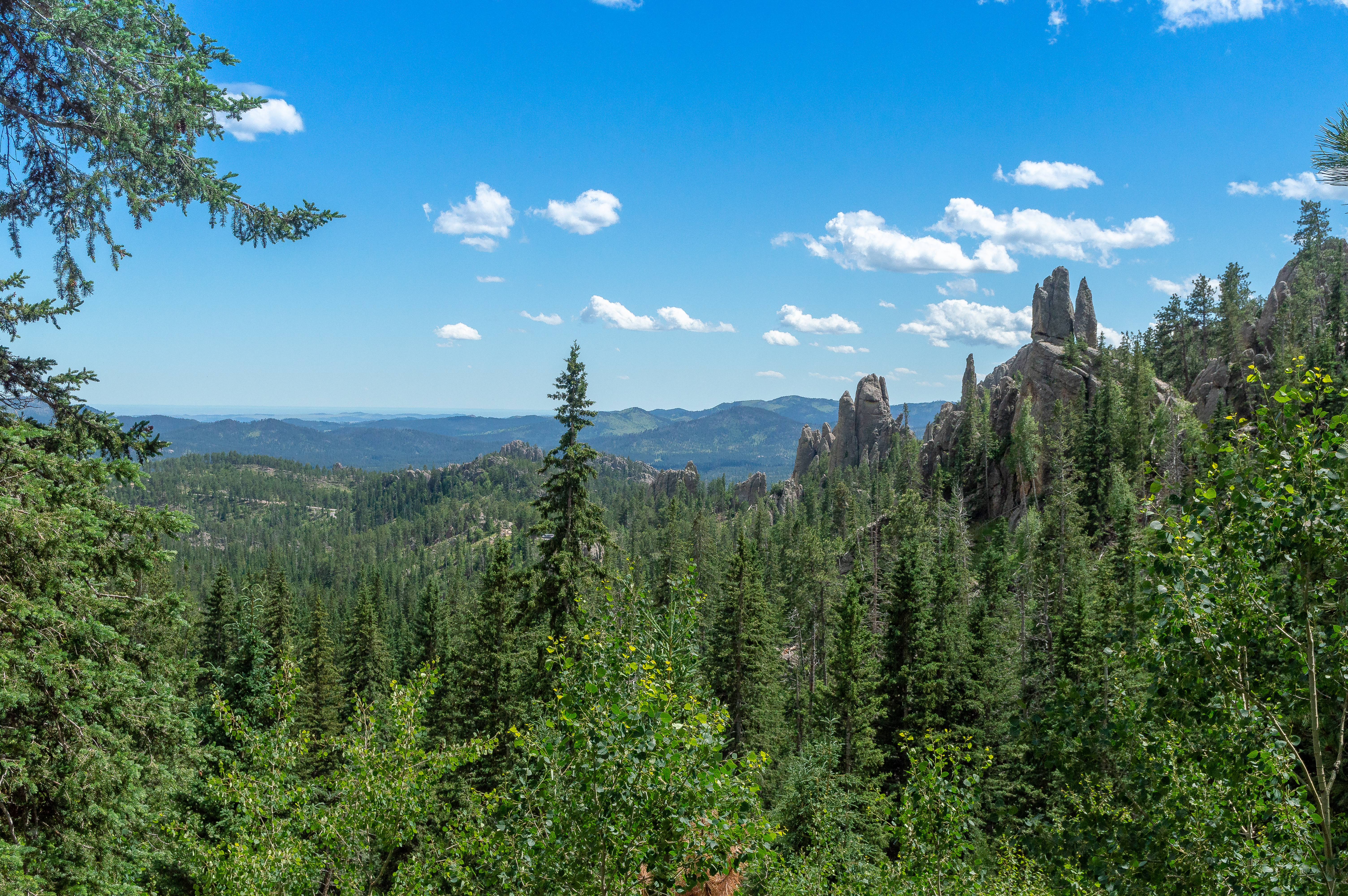
We really enjoy the Black Hills and will be back!